#Gradiva 2006
Explore tagged Tumblr posts
Text




James Wilby as John Locke in Gradiva (C'est Gradiva qui vous appelle) (2006)
#James Wilby#Gradiva 2006#John Locke#Gradiva#It's Gradiva Who Is Calling You#C'est Gradiva qui vous appelle#This happened#I have so many questions about this film
10 notes
·
View notes
Photo



Gradiva/ Alain Robbe-Grillet/ 2006
127 notes
·
View notes
Text
Poeti in Campania: intervista a Mario Fresa

Il poeta campano che andiamo ad intervistare è Mario Fresa (Salerno, 1973). Ha compiuto gli studi classici e musicali e si è laureato in Letteratura italiana. Sue poesie sono state pubblicate su riviste italiane, francesi e internazionali: «Paragone», «Caffè Michelangiolo», «Nuovi Argomenti», «Almanacco dello Specchio», «Recours au Poème», «L’area di Broca», «Gradiva» «Quadernario», «Palazzo Sanvitale», «La clessidra», «Semicerchio», «Portique». È presente in varie antologie, pubblicate sia in Italia sia all'estero, da Nuovissima poesia italiana (Mondadori, 2004) alla recente Veintidós poetas para un nuevo milenio, numero monografico della rivista spagnola «Zibaldone. Estudios italianos» (Università di Valencia, 2017). È del 2002 il prosimetro Liaison, con la prefazione di Maurizio Cucchi (edizioni Plectica; Premio Giuseppe Giusti Opera Prima, Terna Premio Internazionale Gatto); seguono, tra le altre pubblicazioni di poesia, il trittico Costellazione urbana (Mondadori, «Almanacco dello Specchio», n. 4, 2008); Luci provvisorie (una triade di poemetti apparsa nel n. 45 di «Nuovi Argomenti», Mondadori, 2009); Uno stupore quieto (Stampa2009, a cura di Maurizio Cucchi, 2012; menzione speciale al Premio Internazionale di Letteratura Città di Como); La tortura per mezzo delle rose (nel sedicesimo volume di «Smerilliana», 2014, con un’analisi critica di Valeria Di Felice); Teoria della seduzione (Accademia di Belle Arti di Urbino, con disegni di Mattia Caruso, 2015); Svenimenti a distanza (prefazione di Eugenio Lucrezi; Il Melangolo, 2018).Tra i suoi libri di saggistica, Il grido del vetraio (Nuova Frontiera, 2005); Le tentazioni di Marsia (Nuova Frontiera, 2006) e La poesia e la carne (La Vita Felice, 2008): tre volumi scritti in collaborazione con il filosofo Tiziano Salari; Come da un’altra riva. Un’interpretazione del Don Juan aux enfers di Baudelaire (Marco Saya, 2014); Le parole viventi. Modelli di ricerca nella poesia italiana contemporanea (La Recherche, 2017); Alfabeto Baudelaire (saggio e scelta di traduzioni, EDB, 2017). Mario Fresa ha dedicato una specifica attenzione all’attività traslatoria, in particolare nell’ambito poetico, traducendo dal greco moderno (Sarandaris), dal latino classico e medievale (Catullo, Marziale, Seneca, Bernardo di Chiaravalle) e dal francese (Baudelaire, Rimbaud, Musset, Desnos, Apollinaire, Frénaud, Char, Cendrars, Queneau, Duprey). Ha ricevuto, tra gli altri, il Premio Franco Fortini per la saggistica (2011) e, ad honorem, nel 2017, il Premio Internazionale Prata per la critica letteraria. Come ti sei avvicinato alla poesia? Nel periodo dei miei studi musicali, a vent’anni, traducevo i testi dei maggiori liederisti e di alcuni libretti del teatro d’opera (m’interessavano, soprattutto, i principali Singspiele del Sette-Ottocento: quelli scritti da Schikaneder/Giesecke, Kind, Treitschke…); di questi ultimi approntavo anche ingegnose traduzioni isometriche. Continuai a coltivare l’arte della traduzione e passai alla poesia francese dell’Otto-Novecento. Poi, a poco a poco, grazie a questo magnifico, quasi quotidiano contatto a corpo a corpo con la musica e con la poesia, iniziai a scrivere versi in modo autonomo. Nel gennaio del 1999 pubblicai la mia prima poesia, intitolata La sabbia e gli angeli. Era un omaggio a mio padre. Maurizio Cucchi la fece uscire sul settimanale «Specchio della Stampa». C’è stato qualcuno che devi ringraziare per averti dato, che so, dei consigli di come muoverti nel tuo percorso artistico? I consigli più importanti li ho ricevuti dalla lettura e dallo studio diretto dei poeti, in ispecie del secondo Novecento. Che cosa cerchi attraverso la poesia? Qual è il tuo intento? L’ambizione è quella di dare vita, per il tramite di un piccolo inferno linguistico, a uno spazio difficile, impercorribile (diresti: a un buco nero) che conduca a una sorta di interdizione dell’utilitilarismo economicistico della parola. L’intento è quello di creare la proiezione di un abbandono provvisorio che permetta, infine, l’emersione, più oggettiva che soggettiva (e perturbante, più che ricompositiva) di quella dimensione psichica sepolta che il pensiero junghiano definisce ombra. Ma lo scopo è anche un altro; ed è di natura anarchica, perché fondata su di una salutare disobbedienza luciferina che sempre io desidero attribuire alla parola. In tale prospettiva disturbante e ribelle, lo stesso linguaggio impara finalmente a combattere e a corrodere i propri interni e subdoli scopi mercificanti. Così, le nuove immagini proposte, sempre alterate/alteranti, minano la sicurezza reazionaria della comunicazione tradizionale e opportunistica, in modo da offrire un messaggio di trasvalutazione dei valori espressivi “comuni” e di costante opposizione nei riguardi della rassicurante comunicabilità dell’uomo “filisteo” (asservito ai poteri e alle ipocrisie del linguaggio sociale). La tua scrittura segue delle linee o delle correnti culturali specifiche? Lo studio del saggio Totem Art di Wolfgang Robert Paalen mi ha molto influenzato e ispirato. Quali programmi hai in cantiere? Ho finito da pochi mesi (dopo sette anni di lavoro!) di curare un Dizionario della poesia italiana del secondo Novecento (dal 1945 a oggi), la cui pubblicazione è imminente. Sto lavorando anche ad altri quattro o cinque libri che forse, se Arimane vuole, saranno presto pubblicati. Come vivi la cultura, la poesia, nella tua città, nella tua vita? Trovi difficoltà e quali? Ho organizzato, nei tempi passati, molti incontri letterari nella mia città. Adesso sono stufo. Intanto, mancano gli spazi. Qualche anno fa, a Salerno, c’erano decine di librerie. Ora si contano sulle dita di una sola mano. Si moltiplicano i ristoranti, però. Lo sappiamo bene: riempire la pancia è meno faticoso di pensare. Hai mai partecipato a premi letterari? Che opinione hai di essi? Ho molti bei ricordi dei Premi che mi sono stati assegnati. Cito il più caro: nel 2004 ricevetti il Premio Capoverso organizzato da Carlo Cipparrone e dal giovane editore Antonio Alimena. In quell’occasione felice, conobbi il filosofo e poeta Tiziano Salari. Diventammo, a distanza, due “amici stellari”, come dice Nietzsche. Scrivemmo tre libri insieme e fondammo anche una collana editoriale di ispirazione hölderliniana, “Il vulcano e la rosa”. Oggi, con la crisi dell’editoria, pubblicare un volume non è semplice: le grandi case editrici non ti filano se non sei legato politicamente o a risorse economiche, e le piccole ti chiedono contributi economici, spesso esosi. Per non parlare poi della poesia che, seppur prolificante, è rinchiusa in “cripte” elitarie. Hai riscontrato difficoltà editoriali durante il tuo percorso, e se sì, per quali motivi? Non ho mai avuto alcuna difficoltà nel pubblicare. Il prossimo libro di poesie, in uscita quest’anno, è nato in occasione di un invito che mi è stato rivolto da un editor di rara competenza. Certo, la poesia e gli stessi poeti sono rinchiusi in “cripte”, come tu dici. Il termine, tristemente funebre, è opportuno. Se chiedi a una persona di media cultura di citare il nome di un poeta italiano contemporaneo, sta’ sicuro che la risposta sarà il silenzio assoluto. Se dovessi paragonare la tua poesia ad un poeta famoso, a chi la paragoneresti? Quale affinità elettive ci trovi con la tua poesia? Ma no, non è possibile. Mi ripeto continuamente, insieme con Gozzano: «Ed io non voglio più essere io». Però non voglio essere nemmeno un altro al quale paragonarmi. Avere un io è già una piccola sciagura. L’attività dell’avere la lascio ai commercianti. Meglio essere che avere. Meglio ancora non essere che essere. La soddisfazione maggiore – se c’è stata – che hai raccolto nel mondo letterario? Soddisfazioni? Quelle le ho soltanto quando dormo un sonno senza sogni. Cosa pensi dei libri digitali? Possono competere con l’editoria tradizionale, cioè con quella cartacea e perché? I libri digitali? Sono utili. Ma non necessari. Qual è il tuo rapporto con la politica? Prego Arimane o Farfarello o Malacoda che mi facciano stare lontano le mille miglia dal fetore etico ed estetico dei nostri governanti. La realtà politica dei tempi correnti è davvero orrenda. Ma la data di origine del disastro è lontana: mi riferisco al 1861, anno di nascita di quella che si soprannominò, in modo più che giusto, Terza Italia o Italietta. Questa Italia fintamente unita fu consegnata con la massima violenza agli orribili Savoia e, da allora, non si è mai più ripresa; ché la sua catabasi – lo si vede con molta chiarezza – è inarrestabile. Siamo passati, in questi anni, dalla volgarità furfantesca del berlusconismo al suicidio annunciato della sinistra, scesa sempre più in basso. Ora è la volta (ahinoi) dei leghisti, dei fascisti e dei risorgenti supercattolici difensori dei “valori” (?) della famiglia (ah, se avessero letto o riletto con attenzione i Tragici greci, o Sigmund Freud, essi avrebbero capito che la famiglia è il luogo di origine di ogni tragedia!). La cultura e la scuola sono state affossate. I nostri governanti sono anti-estetici, illetterati e del tutto incapaci di distinguere un Goya da un Velázquez, o una sonata di Haydn da una sonata di Scarlatti, o un verso di Foscolo da un verso di Leopardi. Ricordo ancora, con orrore, i disastri grammaticali di quella signora con i capelli rosso semaforo che fu nominata, alcuni anni fa, Ministro della Pubblica Istruzione. Ora questo Ministero è stato affidato a un ex allenatore di una squadra di basket. E io che mi lamentavo di Francesco De Sanctis o di Giovanni Gentile. Come vivi la quotidianità? Lavoro; scrivo; amo; veglio. Per fortuna, dimentico tutto con molta facilità: nomi, volti, situazioni. Ma ciò che è essenziale non lo cancello dalla memoria: posso ricordare decine e decine di versi di Baudelaire o l’intera partitura di un concerto mozartiano, dalla prima all’ultima nota. Lo spirituale è nell’arte, non nella vita. Oltre alla poesia, di cosa ti occupi? Musica, disegno, pittura. Se potessi cambiare lo stato comatoso in cui vive oggi la nostra società, quali sarebbero le tue soluzioni, le proposte? Il coma di cui parli è dovuto a una scelta precisa di suicidio. La società capitalistica ha trasformato gli uomini in consumatori-consumati. La cultura è stata disarmata e trasformata in merce o in un continuo e deprimente spettacolo di evasione e di distrazione. Sono contrario a qualsiasi ipotesi cristiana di salvazione o di redenzione, per me e per gli altri; perciò, non propongo nessuna ipotesi di soluzione. Se l’Italietta ha scelto l’eutanasia, si accomodi pure. Io, per me, ambisco a ritirarmi nel bosco, siccome il protagonista del bellissimo libro di Ernst Jünger, Der Waldgang. Qual è la tua ultima fatica editoriale? Puoi parlarcene brevemente? L’ultimo libro è Svenimenti a distanza, edito da il melangolo nel 2018. Sberleffo al perbenismo logico e rassicurante del linguaggio borghese, calcolatore, ipocrita, cattolico, tradotto nella forma di un incubo ininterrotto, felicemente (e innocentemente) crudele. Read the full article
0 notes
Text
KoRoNAsTAvA

Ovo je spisak domaćih radova urađenih u elektronskom obliku za vežbu tokom vanredne situacije izazvane COVID 19 virusom, u okviru nastave na daljinu, od strane učenika, iz predmeta Analiza sa algebrom za drugi razred, Računarstvo i informatika za treći razred, Programiranje i programski jezici, i Verovatnoća i matematička statistika za četvrti razred Matematičke gimnazije.
Analiza sa algebrom: II8.
Prvi domaći rad (ponedeljak, 23. mart 2020. godine). ~ Pojam logaritma ~ [ REšENJE: Zadatak je urađen pismeno. ] ~
Drugi domaći rad (sreda, 25. mart 2020. godine). ~ Osnovna svojstva logaritama ~ [ Četvrti zadatak (blog): Mihailo Lukić ] [ Recipročna vrednost i formula promene baza logaritma (pdf): Andrej Bantulić ] ~
Treći domaći rad (petak, 27. mart 2020. godine). ~ Osnovna svojstva logaritama ~ [ Prvi zadatak (pdf): Milica Zubljić ] [ Drugi zadatak (pdf): Milica Zubljić ] [ Treći zadatak (pdf): Milica Zubljić ] ~
Četvrti domaći rad (ponedeljak, 30. mart 2020. godine). ~ Neka dalja svojstva logaritama ~ [ Treći zadatak (pdf): Vladan Bašić ] ~
Peti domaći rad (sreda, 1. april 2020. godine). ~ Logaritamska funkcija ~ [ REšENJE: Zadatak je urađen pismeno. ] ~
Šesti domaći rad (petak, 3. april 2020. godine). ~ Logaritamske jednačine, dovođenje na zajedničku osnovu ~ [ REšENJE (jpg): Milica Zubljić ] ~
Sedmi domaći rad (ponedeljak, 6. april 2020. godine). ~ Logaritamske jednačine, metoda zamene ~ [ REšENJE: Zadatak je urađen pismeno u Google učionici. ] ~
Osmi domaći rad (sreda, 8. april 2020. godine). ~ Logaritmovanje jednačine ~ [ Prvi zadatak (blog): Milica Zubljić ] [ Drugi zadatak, bez smene (blog): Mihailo Lukić ] [ Drugi zadatak, smena (blog): Vladan Bašić ] ~
Deveti domaći rad (petak, 10. april 2020. godine). ~ Logaritamske nejednačine ~ [ Prilog (RTS Planeta): Logaritamske nejednačine ] [ Prvi zadatak (blog): Milica Zubljić ] [ Drugi zadatak (blog): Milica Zubljić ] [ Četvrti zadatak (blog): Ana Kiković ] ~
Deseti domaći rad (ponedeljak, 13. april 2020. godine). ~ Logaritamske nejednačine. Logaritmovanje logaritma. ~ [ Prilog (škola Rajak): Logaritamske nejednačine 3 ] [ Rešenje (blog): Mihailo Lukić ] [ Rešenje (pdf): Ana Kiković ] [ Rešenje (pdf): Vladan Bašić ] ~
Jedanaesti domaći rad (sreda, 15. april 2020. godine). ~ Priroda (reifikacija) znanja u savremenom društvu. ~ [ Prilog (dnevni list Politika): Stara kriza u novom odelu ] [ REšENJE: Zadatak je urađen pismeno u Google učionici. ] ~
Dvanaesti domaći rad (sreda, 22. april 2020. godine). ~ Logaritamske nejednačine. Sistematizacija. ~ [ Prilog (Matematika za poneti): Logaritamske nejednačine ] [ Rešenje (blog): Andrej Bantulić ] [ Rešenje (blog): Ana Kiković ] ~
Pregledanje odocnelih domaćih zadataka, predlog ocena na osnovu ostvarenih rezultata tokom realizacije 1.-8. domaćeg rada (25. mart - 10. april) do uskršnjih praznika (petak, 24. april 2020. godine). ~ Logaritamske nejednačine. Utvrđivanje. ~ [ Prilog (tabela sa bodovanjem i ocenama): Realizacija 1.-8. domaćeg rada ] ~
Trinaesti domaći rad (ponedeljak, 27. april 2020. godine). ~ Kombinatorika. Obnavljanje. ~ [ Prilog (RTS Planeta): Kombinatorika, uvod ] [ Rešenje (pdf): Ognjen Kužić ] [ Drugi zadatak (blog): Ognjen Kužić ] ~
Četrnaesti domaći rad (sreda, 29. april 2020. godine). ~ Varijacije. Obnavljanje. ~ [ Prilog (RTS Planeta): Varijacije ] [ Rešenje 1. - 3. zadatka (blog): Milica Zubljić ] [ Rešenje 4. zadatka (blog): Ana Kiković ] ~
Petnaesti domaći rad (ponedeljak, 4. maj 2020. godine). ~ Kombinatorne jednačine i nejednačine. Obnavljanje. ~ [ Prilog (RTS Planeta): Kombinatorika, utvrđivanje ] [ Rešenje jednačine (blog): Ana Kiković ] [ Rešenje nejednačine (blog): Ana Kiković ] [ Rešenje 1. jednačine (blog): Andrej Bantulić ] [ Rešenje 2. jednačine (blog): Andrej Bantulić ] [ Rešenje 3. zadatka (blog): Milica Zubljić ] [ Rešenje 4. zadatka (blog): Milica Zubljić ] [ Rešenje 5. zadatka (blog): Milica Zubljić ] ~
Obnavljanje gradiva (sreda, 6. maj 2020. godine). ~ Kombinatorika. Vežbanje. ~ [ Prilog (Matemanija) pdf: Kombinatorika – formule, primeri, osobine ] [ Prilog (Matemanija) net: Kombinatorika – spisak formula, izvođenje formula ] [ Prilog (Mathreference) net: Permutacije, kombinacije, varijacije ] [ REšENJE: Obnavljanje je obavljeno u okviru Viber grupe. ] ~
Šesnaesti domaći rad (petak, 8. maj 2020. godine). ~ Kombinatorni problemi. Utvrđivanje. ~ [ Prilog (zadaci): Izbor sa prijemnih ispita za "tehničke" fakultete ] [ Rešenje 1. i 2. i 3. zadatka (pdf): Vladislav Vukosavljević ] [ Rešenje 4. i 5. zadatka (pdf): Aleksa Pantović ] [ Rešenje 6. i 7. zadatka (pdf): Vladan Bašić ] ~
Sedamnaesti domaći rad (ponedeljak, 11. maj 2020. godine). ~ Uvod u teoriju brojeva. Obrada / obnavljanje. ~ [ Prilog (Mathreference) net: Deljivost celih brojeva ] [ Prilog (moja skripta) pdf: Probrani problemski zadaci ] [ Rešenje 2. zadatka (pdf): Ana Kiković ] [ Rešenje 3. zadatka (pdf): Ana Kiković ] ~
Obnavljanje gradiva (sreda, 13. maj 2020. godine). ~ Teorija brojeva. Vežbanje. ~ [ Prilog (blog): Celi brojevi XVI ] [ Prilog (blog): Celi brojevi XV ] [ Prilog (blog): Celi brojevi XIV ] [ REšENJE: Obnavljanje je obavljeno u okviru Viber grupe. ] ~
Osamnaesti domaći rad (petak, 15. maj 2020. godine). ~ NZD. Euklidov algoritam. Obrada / obnavljanje. ~ [ Prilog (SANU) png: NZD ] [ Prilog (SANU) png: Euklidov algoritam ] [ Prilog (SANU) png: Linearna zavisnost NZD ] ~
Devetnaesti domaći rad (ponedeljak, 18. maj 2020. godine). ~ NZD. Euklidov algoritam. Vežbanje. ~ [ Prilog (moja skripta) pdf: Probrani problemski zadaci ] [ Prilog (prof Vladimir Božović) png: Rešenje 1. zadatka ] ~
Obnavljanje gradiva (sreda, 20. maj 2020. godine). ~ Teorija brojeva. Vežbanje. ~ [ Prilog (blog): Celi brojevi XIX ] [ Prilog (blog): Celi brojevi XVIII ] [ Prilog (blog): Celi brojevi XVII ] [ REšENJE: Obnavljanje je obavljeno u okviru Viber grupe. ] ~
Utvrđivanje gradiva (petak, 22. maj 2020. godine). ~ Kombinatorika. Vežbanje. ~ [ Rešenje 1. zadatka (pdf): Milica Zubljić ] [ Rešenje 2. zadatka (pdf): Milica Zubljić ] [ Rešenje 3. zadatka (pdf): Milica Zubljić ] [ Rešenje 4. zadatka (pdf): Milica Zubljić ] [ Rešenje 4. zadatka (pdf): Ana Kiković ] [ REšENJE: Obnavljanje je obavljeno u okviru Viber grupe. ] ~
Dvadeseti domaći rad (ponedeljak, 25. maj 2020. godine). ~ Linearne Diofantove jednačine. Obrada. ~ [ Prilog (SANU) png: NZD i Diofantove jednačine ] [ Prilog (SANU) png: Osnovne Diofantove jednačine ] [ Prilog (SANU) png: Linearne Diofantove jednačine ] [ REšENJE: Zadatak je urađen pismeno u Google učionici. ] ~
Utvrđivanje gradiva (sreda, 27. maj 2020. godine). ~ Kombinatorne jednačine i nejednačine. Vežbanje. ~ [ Rešenje jednačine (pdf): Ana Kiković ] [ Rešenje nejednačine (pdf): Ana Kiković ] [ Rešenje 1. i 2. zadatka (pdf): Andrej Bantulić ] [ Rešenje 3. zadatka (pdf): Milica Zubljić ] [ Rešenje 4. zadatka (pdf): Milica Zubljić ] [ Rešenje 5. zadatka (pdf): Milica Zubljić ] ~
Dvadeset i prvi domaći rad (petak, 29. maj 2020. godine). ~ Diofantove jednačine. Vežbanje. ~ [ Prilog (moja skripta) pdf: Probrani problemski zadaci ] [ Rešenje 1. zadatka (png): Ana Kiković ] [ Rešenje 2. zadatka (png): Vladislav Vukosavljević ] [ Rešenje 3. zadatka (png): Milica Zubljić ] [ Rešenje 4. zadatka (pdf): Andrej Bantulić ] ~
Dvadeset i drugi domaći rad (ponedeljak, 1. jun 2020. godine). ~ Sistematizacija gradiva obrađenog tokom nastave na daljinu. ~ - Kombinatorika. - Deljivost celih brojeva. - Diofantove jednačine. - Eksponencijalne i logaritamske jednačine. - Eksponencijalne i logaritamske nejednačine. ~ [ Test iz 2010. – logaritamska nejednačina (pdf): Ana Kiković ] [ Test iz 2010. – deljivost celih brojeva (pdf): Ana Kiković ] ~ [ Test iz 2006. – zadatak 05: logaritamska jednačina (pdf): Aleksa Pantović ] [ Test iz 2006. – zadatak 06: logaritamska nejednačina (pdf): Aleksa Pantović ] [ Test iz 2006. – zadatak 07: kombinatorika (pdf): Aleksa Pantović ] [ Test iz 2006. – zadatak 18: kombinatorika (pdf): Aleksa Pantović ] [ Test iz 2006. – zadatak 20: logaritmi (pdf): Aleksa Pantović ] ~
Obnavljanje gradiva (sreda, 3. jun 2020. godine). ~ Teorija brojeva. Vežbanje. ~ [ Prilog (blog): Celi brojevi XXI ] [ Prilog (blog): Celi brojevi XX ] [ REšENJE: Obnavljanje je obavljeno u okviru Viber grupe. ] ~
Računarstvo i informatika: III8.
KoRoNAsTAvA ~ Rii III-8 → ~
Programiranje i programski jezici: IV8.
KoRoNAsTAvA ~ pipJ IV-8 → ~ COVID-19 zadaci za PROLOG → ~
Verovatnoća i matematička statistika: IV8.
KoRoNAsTAvA ~ viMs IV-8 → ~
Škola: Matematička gimnazija Kraljevo. Koordinator Ukop(č)avanja: Jovan Pavlović. ✓ pAyPAL.ME DoNiRAJ BLoG → ✓ REDBuBBLE sHop / izLoG → ✓ pHoTocRowD FoToGRAF → ✓ FAcEBook sTRANicA → ✓ piNTEREsT TABLA → Ilustracija: Bridget Riley [UK] (b 1931) ~ 'Cadence No. 10', 2008. Oil on canvas.
0 notes
Link
0 notes
Text
Editor's Option: 10 Best Books on SEO
Search engine optimization is the technique behind the madness of online marketing. At its many fundamental level, it's the procedure of figuring out how to become the top result for Internet users who key a specific mix of words into Google, Bing, and other online search engine. At its most complex, it is the science of identifying what combination of keywords, material, code, layouts, and marketing methods enhance a site to maximally reach both its intended audience and the rest of the Internet.
Being the most popular online search engine, Google has actually been accountable for leading the charge among for expert search engine optimizers, having literally and virtually set the bar for seo practices. And yet, because of the fact that the leading search engine is always undergoing updates that basically alter how online search engine optimizers run, there has actually been a surplus of books published on SEO over the past Ten Years. In their effort to keep up with the world's tech giant and other online search engine algorithms, authors have actually published literally numerous books to strike a really fast-moving target. And thus much material on technology, the majority of these authors and their books have either fizzled entirely or end up being obsolete due to the time-sensitivity of their target. Some, whether through yearly editions or large dint of authorial statement, have endured the test of time to hold their shelf life and become titans of SEO guidance. Which is why we've produced this ranking. To discover those titans, and share their SEO suggestions with you.
Our technique for assembling this ranking was to sort through the nearly 500 books shelved under "SEO" on the popular reader review website, Goodreads. We then handpicked the only 90 with a minimum of two scores, and scored them inning accordance with the typical variety of stars that readers have actually provided; the total number of rankings each book has actually gotten; and the significance of their author to establishing an understanding of search engine optimization. Just the highest ranked, many ranked, and many authorially relevant books increased to the top of our list. See if you acknowledge a few of the titles. If you've been among the many online search engine optimizers who've taught yourself, we bet you'll recognize at least one title, and maybe even several, that you've read yourself.1.
The Art of SEO: Mastering Seo by Eric Enge, Stephen Spencer, Jessie Stricchiola, and Rand Fishkin
The Art of SEO is a textbook in its third edition released by O'Reilly Media by 4 SEO professionals: Eric Enge, Stephen Spencer, Jessie Stricchiola, and Rand Fishkin. In this book of books, the authors contribute to the growing collection of scholarship they have actually composed in previous years on such topics as varied as social media information, user engagement, and naturally online search engine exposure, utilizing the current info offered on Web online search engine. Released in August of 2015, The Art of SEO is written for fellow experts and interested beginners who are wanting to stand on the helm of future advancements in search engine optimization. It offers a clear window into the past and present indexing practices of search engines and their developers, exploring the underlying theory of online search engine, and offering a comprehensive peek of their inner-workings at the byte-sized level. Although the authors can not predict the future of SEO, they supply a standard, well-researched structure of understanding essential for any individual to reasonably speculate on and produce an optimization method with their site's future in mind. As this fundamental referral work continues to grow with each edition, the reader's experience continues to be a humbling one: "The minute you believe you know everything about SEO, this book will put you back in your place." We will require humbleness like this if we're going to comprehend the ever-changing nature of search engine optimization, a needed job that Art of SEO will make simpler if we allow it to teach us something new every day.2.
Browse Engine Optimization: An Hour A Day by Jennifer Grappone and Gradiva Couzin
An Hour A Day is a newbie's overview of all things seo, specifically planning it. Co-authored by U.S. SEO experts, Jennifer Grappone and Gradiva Couzin, An Hour A Day ended up being a go-to resource upon its May 2006 release, considering that which time it has been released in 3 editions, the most current of which came out in 2011. In developing and updating this resource, Grappone and Couzin became ended up being global voices in a global discussion about the significance of establishing an unique and optimum method for increasing a website's online visibility by virtue of its location in search engine rankings. As a testament to the online search engine optimizer's approach of operating on the principle of determination and experimentation, the book condenses the art of search engine optimization into its most attractive form: one hour each day of detailed action and following a recommended plan. It teaches us, one action at a time, how to optimize a site not only for search engines, but also for blog sites and social media. With useful guidance like this, Grappone and Couzin comprehend that in order for a site to do well, its marketers need to make sure that all of its strategies are operating under the very same strategy. A fine example of how taking a couple of simple actions can change a website's place in the rankings, Browse Engine Optimization: An Hour A Day is an exceptional read for anybody interested SEO, online marketing, and how the 2 can work together to place a business in the spotlight.3.
Search Engine Optimization (SEO) Secretsby Danni Dover and Erik Dafforn
SEO Secrets is an organisation book composed by expert SEO experts, Danny Dover and Erik Dafforn, believed leaders at the head of the SEO motion. Dover and Dafforn make use of their own personal and professional experiences, having actually been acquainted with the methods of search engine optimization considering that its early days, in order to communicate the tips, techniques, and little-known techniques utilized by some of the very best Lead SEOs worldwide. To develop their case, Dover and Dafforn dives deep into the principles of Web marketing through SEO, including on-page optimization, off-page optimization, link building, all using real-life examples from their careers for the purposes of illustration. These examples include, but are not restricted to, work carried out for Fortune 500 companies like Honda and AT&T. Dover and Dafforn provide convincing explanations of the value of establishing an SEO strategy that both ranks and converts, which is maybe their biggest contribution to the discussion on seo. Published in 2011, SEO Secrets superseded lots of comparable books released around this peak time in SEO's current history, since it is so accessible to marketing beginners and latecomers, particularly those who want concrete recommendations on a few of the best-kept tricks in the market that not only produce leads, however create financial outcomes.4.
Learn SEO: Beginner's Guide to Seo by Darren Varndell (tie)
Find out SEO is the 3rd organisation book composed by software designer, Internet entrepreneur, and serial SEO author, Darren Varndell. Released in 2014, it is one of the more recent SEO marketing books to offer a novice's guide to the practices and concepts of search engine optimization. By stressing the significance of participating in "white hat" marketing methods like content publishing and avoiding "black hat" marketing methods like keyword stuffing, Varndell draws our attention to the value of following big online search engine' algorithms for optimum ranking boosts and very little ranking penalties. Learn SEO is meant to attract online search engine optimizers throughout the spectrum, from blog writer to Lead SEO, and Varndell works to guarantee he covers every aspect of the SEO process, from keyword research, to content development, to social networks marketing techniques. Although targeted mainly at beginners to the world of SEO, the book's recommendations to web designers on the subjects of repairing ranking problems and charges, as well as the result that Google Panda, Penguin, and Hummingbird have had on the SEO market are vital. It's this degree of market currency and a broad audience awareness that helps Find out SEO increase above the rest and arrive on target.5.
DIY SEO & & Online Marketing Guide: Ways To Do It Yourself Browse Engine Optimization and Web Marketing by Darren Varndell (tie)
Do It Yourself SEO is the first business book written by software developer, Internet business owner, and serial SEO author, Darren Varndell. Published in November of 2013, Varndell's book focuses on answering the question of ways to make money on the Web with Do-It-Yourself SEO marketing methods? As a conclusion of Varndell's Twenty Years of experience as a practicing SEO believed leader, Do It Yourself SEO much of the guide is directly linked to taking newbies through the steps necessary for creating, setting up, and marketing Internet organisations. Naturally, first-time search engine optimizers, Internet marketers, and online business owners thinking about reaching a much better understanding of how keywords and rankings impact audience engagement will discover the book riveting. Varndell composed it with them in mind. However its numerous useful, step-by-step guides for carrying out keyword research study and establishing an essential technique for off-page optimization will be attractive to brick-and-mortar company owners who wish to start a site or perhaps web designers who need a refresher of a few of the essentials. Varndell even consists of a glossary of terms that would assist any SEO become as well-informed as possible, as it works to debunk a few of the market's most technical terms. Inasmuch as this message applies not only to novices however likewise to seasoned specialists, it's no surprise Do It Yourself SEO earns a seat at the table amongst the fantastic books for SEOs to crack open, again, and once again, and once again.6.
SEO SoS: Seo First Help Guide by Darren Varndell
SEO SoS is the second company book written by software developer, Internet business owner, and serial SEO author, Darren Varndell. Published in December 2013, the book concentrates on streamlining SEO for both new and recognized Web online marketers who have a hard time to find what works. It invests ample time reviewing the best ways to fix existing SEO "health issues" that may have an unfavorable impact on rankings due to algorithmic charges or linking oversights that put sites lower on Google's ladder, and can even lead to elimination from the index completely. As a 20-year expert, Varndell is a seasoned expert who is devoted to the practice of retooling methods that have been blacklisted and embracing brand-new methods that have been whitelisted. Inasmuch, SEO SoS functions as more than simply a "Mr. Fix-It" handbook. It can even use suggestions to fellow skilled specialists on the overarching principles and best practices for healthy, natural online success, strategies that undoubtedly wind up avoiding pricey wastes of time, energy, and resources. Not one to simply position a bandaid, distribute a lollipop, and see out the door, Varndell's site health objectives are always holistic and proactive in nature. That is, to increase traffic and income to websites that consistently play by the rules, workout restraint in adopting unhealthy ways of marketing, and be worthy of the long-lasting increase in traffic they inevitably get from such taking such excellent preventive care of themselves.7.
Google Semantic Search: Seo Strategies That get Your Company More Traffic, Increase Brand Name Impact, and Amplify Your Online Existence by David Amerland
Google Semantic Browse is a business book composed by online search engine, social networks, and corporate strategist, David Amerland. Published in 2013, Google Semantic Search is committed to debunking the most technical aspects of the online search engine choice procedure, or how a machine comprehend what we mean when we consist of specific combinations of keywords to carry out a search. Having actually had over Twenty Years of experience in media, communications, and broadly observing search engine patterns as they reoccur, Amerland is appropriate to describe Google functions like Understanding Chart, TrustRank, AuthorityRank in plain English. He is also well-equipped to tease out the distinctions in between carrying out personalized mobile searches, social media searches, and many more types of search with relative ease and convenience. Google Semantic Search is a vast work of explanatory SEO, even presuming as to cover SEO marketing methods that not work, alternative approaches of arranging keywords for maximal search results page, and methods to record significance from disorganized information by attracting the 4 V's of semantic search: Volume, Velocity, Range, and Veracity. And certainly, despite the book being some years of ages, David Amerland has written a remarkable piece of evergreen content that stays appropriate to this day for breaking down a number of Google's most standard principles of operation.8.
SEO Made Simple: Browse Engine Optimization Methods for Controling the World's Largest Online search engine by Michael H. Fleischner
SEO Made Simple is a business book composed by American author and Web marketing professional, Michael H. Fleischner. First published in 2013 to generally favorable evaluations, SEO Made Simple has been praised as "an extremely quick and concise guide," "simple to understand," and "terrific if you are brand-new to SEO." The 2015 edition, like those prior to it, describes the significance of seo, in addition to how businessmen and businesswomen can utilize the power of gripping content throughout all channels to obtain ranked for a picked set of keywords on the world's biggest online search engine: Google. However unlike those prior to it, the 2015 edition likewise accounts for all Google's algorithm changes because 2013 (which there were a number of) as well as offers tested assistance on local optimization strategies that are important to performing organisation online. With his casual, genuine, and authorial voice, Fleischner draws on his greater than 12 years of experience as a business owner at the helm of an effective marketing blog in order to offer insight into business of content marketing and promo. Worrying this business, Fleischner urges us that "Doing appropriate keyword research study is the very first action to a successful SEO campaign," and to" Never ever ignore the power of internal linking. A great internal linking structure can enhance your SERPs (Online Search Engine Outcomes Pages). Fleischner's viewpoint on the relationship that code ought to need to content is particularly training, as it provides the principle that "How you format your page is very important for optimization functions," a piece of recommendations that reaches his suggestions on compliance with Google's algorithms that prioritize material which is consistent with its positioning of keywords in headers, subheadings, and meta tags. In these aspects, Fleischner's book is an excellent "how-to" for brand-new material marketers and webmasters alike.9.
SEO Toolbook: Directory of Free Seo Tools by Jason McDonald
SEO Toolbook is a Web directory site authored by SEO specialist, Google AdWords professional, and social media expert, Jason McDonald. Released in 2015 after a series of Google algorithm updates that caused the creation of software that would help optimize search engine marketing, SEO Toolbook houses an index of those software application tools, all which are complimentary. McDonald utilizes the directory site to teach classes at Stanford Continuing Studies, along with San Francisco's Bay Location Video Union, and Academy X. The tools it indexes are curated so regarding cover every aspect of the SEO procedure, from keyword research, to page tags, to link-building, to diagnostics, rank measurement, google analytics, and beyond. Together with a description of each tool and a significance score, the book also consists of connect to each and every free tool, in addition to tutorials, blogs, and trade convention that show their usefulness. Readers who acquire paper copies receive access to the book's online edition (that includes access to Jason's control panel of clickable tool links), while readers who take any one of McDonald's classes from Stanford, San Francisco Bay Location Video Union, or Academy X also get an e-copy of the book totally free. As an useful referral tool-- one might even call it a traditional "search engine" in its own right-- SEO Toolbook is an exceptional companion piece to any initial or innovative book on the subject of seo or Internet marketing.10.
SEO 2016: Find Out Browse Engine Optimization (SEO Book Series) by R.L. Adams
SEO 2016 is business book composed by the best-selling author, speaker, blog writer, software application engineer, and serial business owner, R.L. Adams. Released in 2015 and with a 2017 edition upcoming, the book is part of a running SEO book series that Adams has committed to explaining the evolution of online search engine practices and the principles they run upon. Drawing on his extensive experience as a technology and internet marketing author, Adams discusses the underpinnings of why we go through the procedure of investigating and establishing the most reliable SEO methods for our brand names. He explains the tremendous number of ranking elements that go into a site's placement in Google's index. (Spoiler: There are over 200). He checks out Google's sole objective to place the most pertinent material at the top of our search engine result when we type in given set of keywords. He even goes so far as to outline the 4 major elements of trust on which Google bases its search algorithm: Trust in Age, Trust in Authority, Trust in Material, and Significance. Even Lead SEOs will discover Adams' suggestions to be a goldmine of details, particularly as it relates to small-but-important optimization concerns, specifically mobile. And because much of its in-depth advice is distilled through the lens of somebody who understands that he is targeting at a fast-moving target,SEO 2016 manages to be evergreen, regardless of the title that dates it. Certainly with so much of our current energy concentrated on positioning websites at Google's top area for all our keywords by acquiring trust and showing relevance, it appears just a matter of time before Adams increases all the method to the top for producing this most pertinent and authoritative series of books on our own keyword: SEO.
Josh R Jackson is Contributing Editor of BestMarketingDegrees.org, a growing resource for online learners, educators, and marketers in between.
Source
https://www.bestmarketingdegrees.org/best-books-on-search-engine-optimization/
0 notes
Text
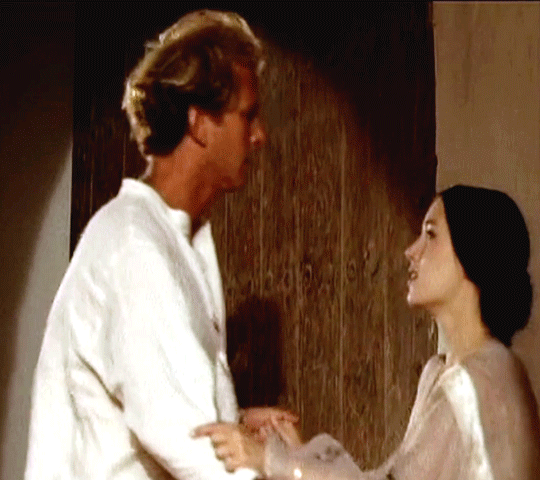
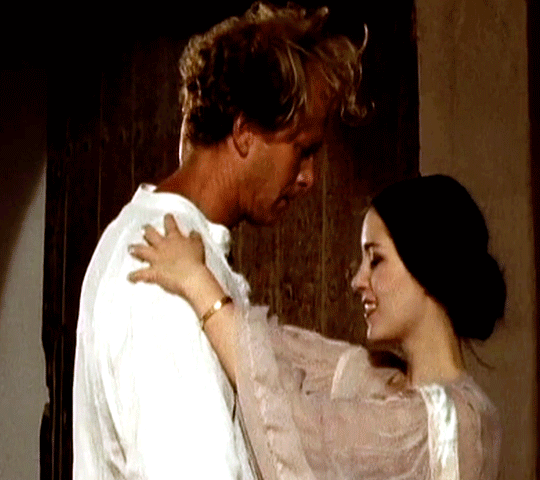
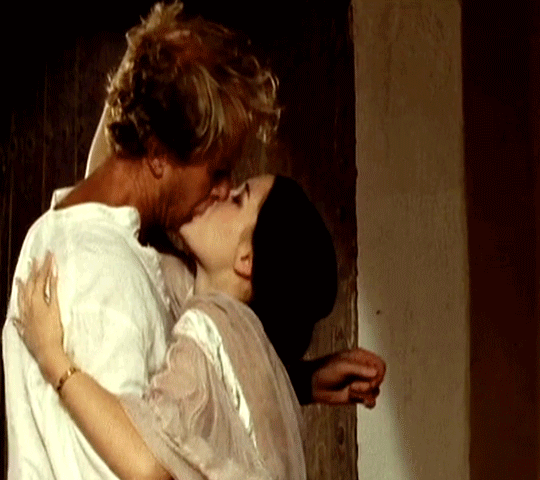
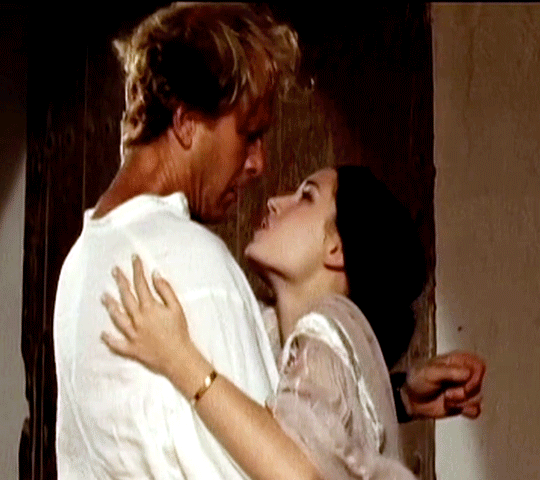

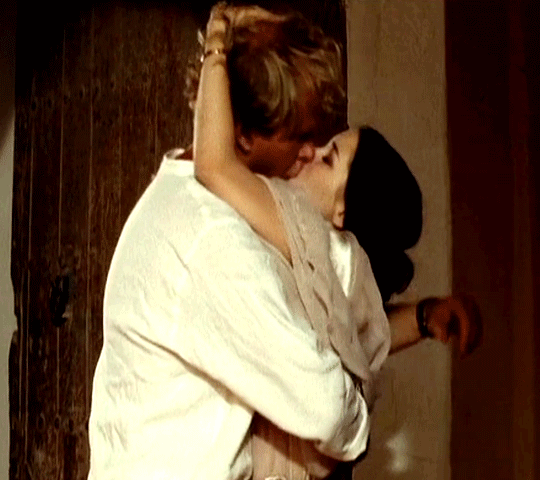
James Wilby's Kiss Scenes: Gradiva (2006) part 1.
#James Wilby#I can see why Hugh Grant praised his kissing#The man knows how to kiss#Gradiva (2006)#James Wilby and kiss scenes#John Locke#This will all be fun to gif#One down many to gif
34 notes
·
View notes
Photo




Gradiva/ Alain Robbe-Grillet/ 2006
67 notes
·
View notes
Text
Bibliography
L. M. Sapphire, André Masson (New York: Lerner-Heller Galleries, 1973
Whitney Chadwick, "Masson's Gradiva: The Metamorphosis of a Surrealist Myth," Art Bulletin 52, 4 (December 1970)
William Jeffett, ed., André Masson: The 1930s (St. Petersburg, Fla.: Salvador Dalí Museum, 1999)
Artforum International; April 1996, Vol. 34, p102-103, 2p
McCloskey, Barbara. Artists of World War II. London: Greenwood Press, 2005, ISBN 0313321531
Oisteanu, Valery (May 2012). "The Mythology of Desire: Masterworks from 1925 to 1945" Armel Guerne « André Masson ou les autres valeurs, 2007.André Masson,La Mémoire du monde, Genève, Skira, 1974 (entretiens avec Gaétan Picon). André Masson, Le Vagabond du surréalisme, entretiens avec Gilbert Brownstone, Paris, éd. Saint-Germain-des-Près, 1975. André Masson, Le Rebelle du Surréalisme, Paris, éd. Hermann, éd. 1976, (anthologie établie par Françoise Levaillant). Réédition en 1994. André Masson, Les Années surréalistes. Correspondance 1916-1942, Lyon, La Manufacture, 1990 (édition établie et présentée par Françoise Levaillant, d’après le Doctorat de F. Levaillant, André Masson : Lettres choisies 1922 - 1942, Université de Paris I, Panthéon-Sorbonne, 1986). André Masson, "Dissonances", An Anthology from X(Oxford University Press 1988); "X magazine", Vol. I, No. III (June 1960) Florence de Mèredieu André Masson, les dessins automatiques, Blusson, 1988. Stephan Moebius Die Zauberlehrlinge. Soziologiegeschichte des Collège de Sociologie , Konstanz, 2006. Bernard Noël,André Masson, la chair du regard, Paris, Gallimard ‘coll. l'art et l'écrivain’, 1993.
René Passeron André Masson et les puissances de signe , Denoël 1975. José Pierre,L’Aventure Surréaliste autour d’André Breton, Paris, éd. Filipacchi, 1986. Clark V. Poling,André Masson and the surrealist self, New Haven & London, Yale university press, 2008.
0 notes
Text
New Post has been published on Kinematografija
New Post has been published on http://www.kinematografija.net/daniel-rafaelic-imenovan-vrsiteljem-duznosti-ravnatelja-havc-a-1170/
Daniel Rafaelić imenovan vršiteljem dužnosti ravnatelja HAVC-a
HAVC
Na sjednici Upravnog odbora Hrvatskog audiovizualnog centra u sastavu: Bruno Kragić (predsjednik), Jadranka Hrga (članica), Ivan Kujundžić (član), Igor Starčević (član) održanoj 16. veljače 2017. godine vršiteljem dužnosti ravnatelja imenovan je Daniel Rafaelić.
Prijedlog je prihvaćen jednoglasno, a sjednici zbog bolesti nije nazočila članica Upravnog odbora Gabrijela Krmpotić Kos.
Daniel Rafaelić rođen je 19. lipnja 1977. godine u Bitoli, Makedonija. Osnovnu i srednju školu završio je u Zagrebu gdje je 1996. godine upisao Filozofski fakultet – diplomirao je povijest 2002. godine (na temu: ‘Amarna period egipatske povijesti umjetnosti’). 2003. godine na istom fakultetu upisao je Poslijediplomski studij hrvatske povijesti. 2006. godine upisao je Poslijediplomski doktorski studij Moderne i suvremene hrvatske povijesti. Radio je u Hrvatskoj kinoteci – Hrvatskom državnom arhivu od 2002. do 2010. godine, kao filmolog – arhivist. Od 2007. do 2009. radi kao Načelnik odsjeka za zaštitu i restauraciju filmskog gradiva. Usmjeren na istraživanje domaće i svjetske filmske povijesti kao i istraživanje filmskih arhiva s ciljem pronalaska zaboravljenih i izgubljenih filmskih zapisa iz Hrvatske. Suradnik je na Akademiji dramske umjetnosti i Filozofskom fakultetu u Zagrebu.
Izvor: HAVC
Nastavi čitati
Objavljen program 14. Human Rights Film ...
Snježana Tribuson želi vam „Sve najbolje...
Kinolektira u kinu Europa
Projekcija filma petkom u Kino klubu Spl...
.yuzo_related_post imgwidth:160px !important; height:150px !important; .yuzo_related_post .relatedthumbline-height:15px;background: !important;color:!important; .yuzo_related_post .relatedthumb:hoverbackground:#fcfcf4 !important; -webkit-transition: background 0.2s linear; -moz-transition: background 0.2s linear; -o-transition: background 0.2s linear; transition: background 0.2s linear;;color:!important; .yuzo_related_post .relatedthumb acolor:!important; .yuzo_related_post .relatedthumb a:hover color:!important;} .yuzo_related_post .relatedthumb:hover a color:!important; .yuzo_related_post .yuzo_text color:!important; .yuzo_related_post .relatedthumb:hover .yuzo_text color:!important; .yuzo_related_post .relatedthumb margin: 0px 0px 0px 0px; padding: 5px 5px 5px 5px; .yuzo_related_post .relatedthumb display:block!important; -webkit-transition:-webkit-transform 0.3s ease-out!important; -moz-transition:-moz-transform 0.3s ease-out!important; -o-transition:-o-transform 0.3s ease-out!important; -ms-transition:-ms-transform 0.3s ease-out!important; transition:transform 0.3s ease-out!important; .yuzo_related_post .relatedthumb:hover -moz-transform: scale(1.1); -webkit-transform: scale(1.1); -o-transform: scale(1.1); -ms-transform: scale(1.1); transform: scale(1.1) .yuzo_related_post overflow:inherit!important; jQuery(document).ready(function( $ ) //jQuery('.yuzo_related_post').equalizer( overflow : 'relatedthumb' ); jQuery('.yuzo_related_post .yuzo_wraps').equalizer( columns : '> div' ); )
0 notes
Text
Como era o mercado editorial da BD há 10 anos? Republicamos o artigo da autoria de Daniel Maia relativo ao primeiro semestre de 2006, o qual tínhamos originalmente publicado a 3 de outubro de 2006 no portal bdesenhada. Entre números, notícias de lançamentos e projectos, uns concretizados, outros gorados, é uma viagem de uma década para os que acompanharam esses dias e motivo de curiosidade para os restantes.
Daniel Maia faz uma consulta de banda desenhada geral e familiar (e outra nem tanto assim) ao 1.º semestre português de 2006
Por Daniel Maia
Era já altura de se lançar um olhar ao estado de saúde do mercado bedéfilo nacional. Não há que negar que os anos recentes têm sido entusiasmantes para quem segue de perto as movimentações da Banda Desenhada portuguesa e dos bastidores do meio. Tendo-se atingido um recorde de edições no ano transacto (490 títulos) era esperado que, sem expansão de mercado, 2006 fosse por fim ser ano de vacas magras.
Senão vejam, numa altura em que no ano passado a soma de lançamentos estava nos 351, em 2006 estamos ainda nos 216 títulos (menos 135 itens), sendo muitos destes complementares ao que é BD, na real acepção do termo. Já a média mensal é de 27 títulos, quando estava nos 44 em 2005 – novamente, um tombo apreciável.
Este semestre, o máximo mensal reservado em 2005 para Junho e Julho (55 novidades cada) instalou-se em Maio, entre o FIBDB – Festival Internacional BD de Beja e a Feira do Livro de Lisboa, com uns meros 38 lançamentos nesse mês. Nos restantes, as edições mantiveram-se na casa dos 20 títulos, ocasionalmente subindo à trintena, como aconteceu em Abril e Junho, por altura das datas chave do calendário bedéfilo acima mencionadas.
Da parte da Asa Edições, nada a apontar. Apesar dos rigores do mercado, publicou até à data o mesmo número de novidades que em 2005, tendo do seu lado trunfos como a animação Astérix e os Vikings e a série Lucky Luke no Público; que aliás entrou recentemente numa 2.ª ronda de distribuição.
De resto, conquistou as suas cores por via de um punhado de boas edições: Para além da continuada aposta em Manara, donde se destaca a nova série Bórgia, que facilitou também o reencontro do público com Jodorowsky, há que tirar o chapéu ao resgate de Mister Blueberry e Face de Lua, em ambos os casos os últimos números das respectivas colecções, com Giraud e Boucq no seu melhor. Fora do âmbito mais popular, são de aplaudir o mais recente álbum de Miguelanxo Prado, A Mansão dos Pimpão, e o Cidade de Vidro, com Mazzuccheli a desenhar Karasik, inspirado por Paul Auster.
No caso da VitaminaBD, deu-se um abrandamento de ritmo, que na realidade se deve a problemas com a sua distribuição. A editora decidiu ser altura para dar por terminada a relação com quem lhe prestava esse serviço e brevemente deverá anunciar novo parceiro nessa área, algo que terá resultados práticos a partir de Outubro. Por essa razão, a 1.ª fornada de álbuns deste ano só foi difundida nos pontos de venda servidos pela própria VitaminaBD. Nesta, insere-se a estreia de Miguelanxo Prado no catálogo, com Belo Horizonte, obra que colheu boas críticas e fortes encomendas, mas também as continuações de Senda e Universal War One, para além do one-shot Vlad, o Empalador, de Hermann.
Avançando a sua agenda, lançou em Agosto dois novos títulos (ie. Regulador 2 e Sky Doll 3), estando no prelo outros para estrear entre o FIBDA – Festival Internacional BD da Amadora e o Natal. Esperem para essa altura o retorno de quatro grandes nomes do catálogo da editora, com o novíssimo tomo de Hermann para A Herança de Bois-Maury (Dulle Griet), Mr.Punch de Neil Gaiman e Dave McKean, e Roman Dirge, com a popular Lenore, publicação que se espera abra um novo segmento de mercado na BD nacional. Mais: para além da conclusão da primeira trilogia de Sky Doll, também a colecção Favole chegará ao fim, com a estreia do 3º tomo a coincidir com a reedição do 1º. Esta série tem sido igualmente um best-seller, embora não seja concretamente BD.
E para finalizar, aguarda-se para estes meses a estreia de Humberto Ramos, com K – Big Bang Baby, e do seu professor, Carlos Meglia, com o volume inicial de Cañari, Lágrimas de Ouro. No entanto, é ainda possível que se efectuem lançamentos não alinhados: Eu, Vampiro 3, no umbrella Mancha Negra, está em pré-produção…
Embora seja editora de baixa expressão, a Gradiva é, para já, a grande surpresa de 2006. Não é normal editar mais de 12 títulos por ano, e mesmo esses costumam cingir-se às tiras cómicas – segmento de mercado que domina. Porém, recentemente tem aberto portas para duas novas orientações: o humor de elite e BD em álbum.
No último, há a salientar a recuperação de Largo Winch, do qual anunciou já o 6º volume. Fora do âmbito franco-belga, depois da pedrada no charco em 2005 com o derradeiro volume de Will Eisner, voltou este ano a investir no universo do mestre, com John Law, Detective, que contém três histórias do próprio Eisner. No que toca ao humor de elite, somando à estreia em Portugal do seminal Matt Groening, anunciou também que se prepara para inaugurar uma colecção do genial Gary Larson!
Virando a atenção para a controvérsia do ano, temos ainda que considerar a situação das Edições Devir. Desta – apraz-me dizer – há boas notícias a relatar: Na ressaca do seu pior ano editorial, a Devir, ciente do desagrado dos leitores face às previsões goradas, ultima presentemente o seu regresso! Esclarecida na estratégia a adoptar, e com contratos finalizados que cobrem o final deste ano até 2007, a Devir decidiu preservar a sua tradição no material de super-heróis, embora vá igualmente focar a BD off-mainstream. Assim, vamos ter quatro volumes da Marvel, onde se incluem o derradeiro capítulo de Novos X-Men e Homem-Aranha/Gata Negra. A acompanhá-los, vai surgir um novo tomo de Sin City e o clássico Orquídea Negra, a primeira colaboração de Neil Gaiman e Dave McKean – numa edição partilhada por outra editora. De Gaiman, haverá ainda um novo volume de Sandman.
Na frente nacional, prevê-se que A Agência de Viagens Lemming ou A Pior Banda do Mundo 6 se vá estrear no FIBDA. A muito divulgada Blackbox Stories porém, continua sem data para edição devido a acertos internacionais relacionados com co-impressões.
Outra incógnita que persiste prende-se com a continuação dos títulos mensais, em modelo de revista; está a ser equacionada a vantagem da editora manter um título de banca e daí beneficiar naquele circuito a distribuição do seu restante catálogo.
Mas há mais boas-novas neste campo. Qual Yoda, posso com segurança vaticinar duas emergentes esperanças a trabalhar o sector norte-americano: Uma destas casas é de origem europeia e vai começar com apenas um título, partilhando responsabilidade numa das BDs já mencionadas, enquanto que da segunda – que labora em silêncio desde há mais de um ano, adquirindo os direitos de títulos high-profile – se espera uma mão-cheia de edições, na maioria títulos topo de tabela do mercado de comics.
No nicho Manga, a situação já esteve mais promissora. Enquanto que a Mangaline deixou por cumprir a agenda de lançamentos prevista para 2006, o desaparecimento da Meribérica e os fracos resultados da Devir neste género secaram as restantes séries em curso: Mother Sarah e Dark Angel, respectivamente. Apenas a Mangaline continua na corrida, mediante a promessa de juntar um número às suas presentes colecções, My Hime e Vampire Princess Miyu, e planeando paralelamente compilar o clássico Lupin III em livros de 620 páginas. A acontecer, estas edições devem ter lugar até ao final do ano, após o qual espera seguir a agenda de lançamentos da casa-mãe espanhola.
Assim, a BD nipónica que se pode aguardar a curto prazo é a movida por ímpetos individuais e em suportes periódicos: Para além da revista por nascer das edições Shoot to Kill (Games e Anime a Go-Go), ainda em preparação, temos no BDJornal as séries Break e Monótonos Monólogos de um Vagabundo, esperando-se ainda para final do ano (ou 2007) o K-Zine 02 e o All-Girlzine 03, que será inteiramente dedicado a Mangá.
Passando para o género juvenil, a Edimpresa, com 71 títulos, impera novamente face às restantes editoras. Embora tenha descontinuado a mensal Série de Ouro e reduzido a regularidade de Obras-primas Disney, a aposta em Especiais e na WITCH continua a bom ritmo, tendo adicionado uma nova revista ao lote – Fadas –, na senda de Princesinhas, ambas dirigidas ao público infantil feminino.
Ainda nesta linha, entre as presenças tímidas da Zero a Oito (Tom & Jerry) e Rainbow (Club Winx), fora outros casos pouco representativos, onde se incluem vislumbres da Booktree em livros de Garfield, e a colecção Polvo com “Os Compadres”, os grandes momentos têm sido para já a edição de Super-Heróis da História de Portugal vol.2, da Bertand, e o admirável esforço editorial da Afrontamento com Obra completa dos Peanuts. Esta, traduzida da colecção original em 25 volumes da Fantagraphics, vai ter os tomos 3 e 4 editados no 4º trimestre e habilita-se a ser das mais badaladas séries em progresso da década; um empreendimento para os próximos seis anos!
Aproveitando a embalagem, a BD infantil tem de momento apenas uma notícia de relevo: A editora Gailivro adquiriu os direitos de O Homodonte, série previamente na posse da Asa, indo editar em 2007 novo tomo dessa colecção e de Morgana (pré-publicada no BDJornal).
Por último, falemos da nova tendência emergente na BD nacional – as revistas de Banda Desenhada.
Outrora ideia impensável, existe presentemente meia-dúzia de projectos em curso: os informativos BDJornal e JuveBêDê (restrito a circuito interno), Shoot to Kill, a humorística HL Comix e a internacional Blazt, de regresso após a reestruturação anunciada. Encontra-se também em estudo outro modelo de revista, orientada para o género europeu, por uma editora nacional firmada; mas dessa só haverá novidades em 2007.
O curioso é que, embora não exista um fluxo de vendas suficiente para suportar todas estas edições, a tendência dificilmente será para abrandar, havendo outros projectos da mesma ordem igualmente na calha. É interessante observar que o segmento dos periódicos se prepara para igual “combate” em bancas como o que foi evidente entre 2002 e 2003 no mercado de álbuns… Felizmente, saem a ganhar os leitores.
Mercado de BD no 1.º semestre de 2006 – um estudo clínico Como era o mercado editorial da BD há 10 anos? Republicamos o artigo da autoria de Daniel Maia relativo ao primeiro semestre de 2006, o qual tínhamos originalmente publicado a 3 de outubro de 2006 no portal…
0 notes
Text
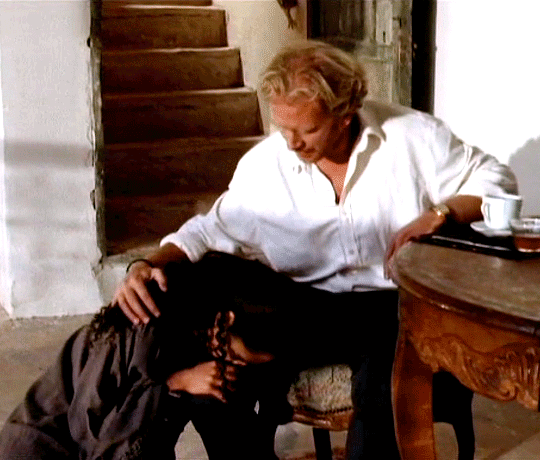
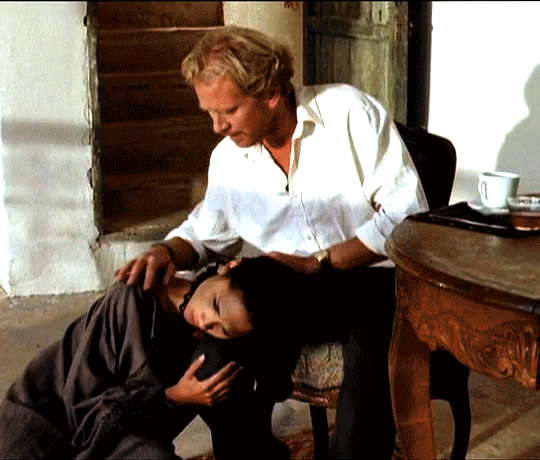
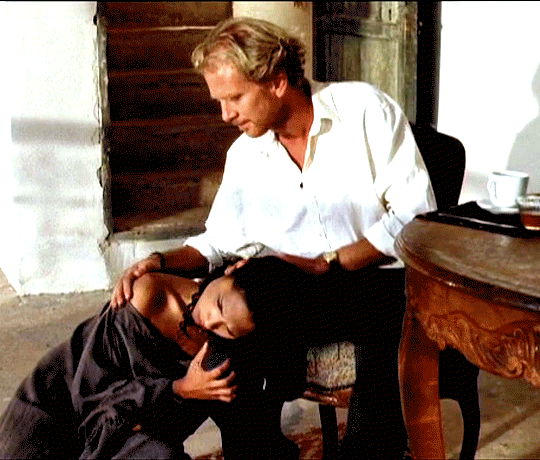
James Wilby Kiss Scenes: C'est Gradiva Qui Vous Appelle Part Two.
#James Wilby#Gradiva (2006)#Dany Verissimo Petit#John Locke#Belkis#C'est Gradiva Qui Vous Appelle#It's Gradiva That Is Calling You
21 notes
·
View notes
Text




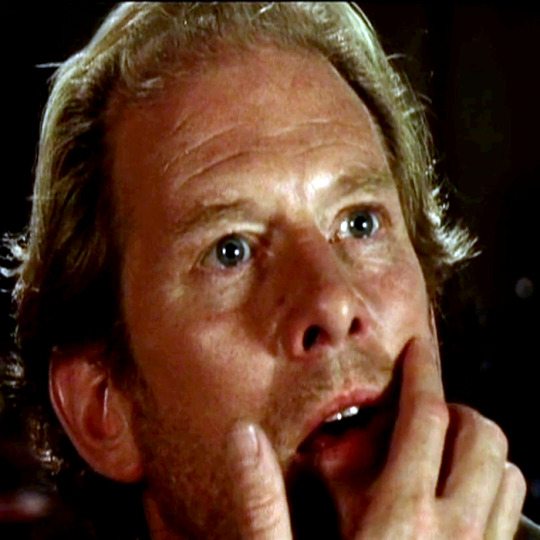


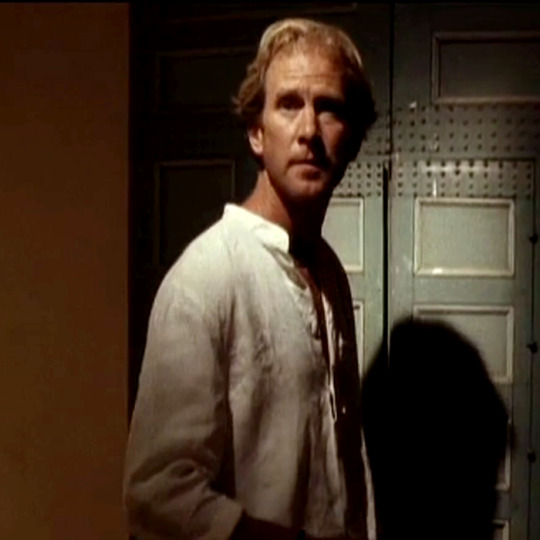
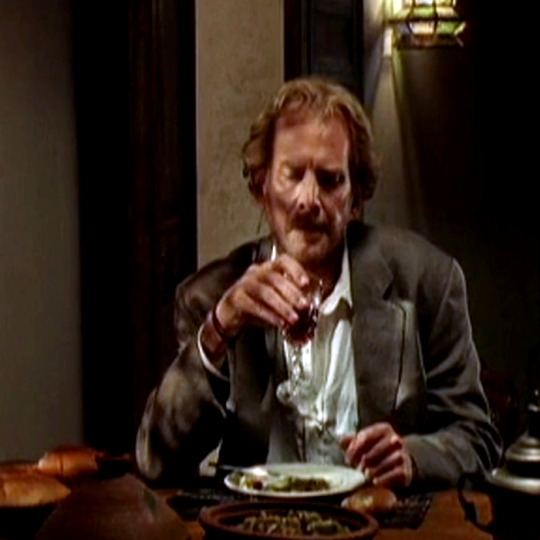



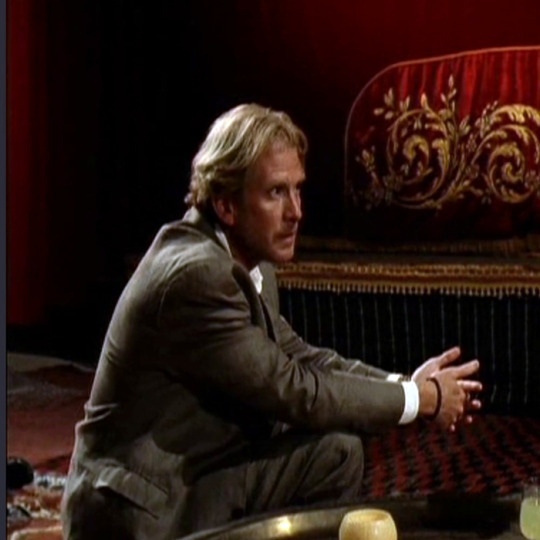






James Wilby in Gradiva (C'est Gradiva qui vous appelle) 2006.
#James Wilby#Gradiva#John Locke#I guess since I'm playing this film to get the screencaps that means this will be the next kissing gifs#Gradiva (2006)#Damn does he look good in this film
21 notes
·
View notes
Text


James Wilby and Dany Verissimo-Petit in Gradiva (C’est Gradiva qui vous appelle) 2006.
#James Wilby#I had to crop out so much#So much cropping#Gradiva#Gradiva (C’est Gradiva qui vous appelle)#2006#John Locke#Belkis#Dany Verissimo-Petit
16 notes
·
View notes
Text

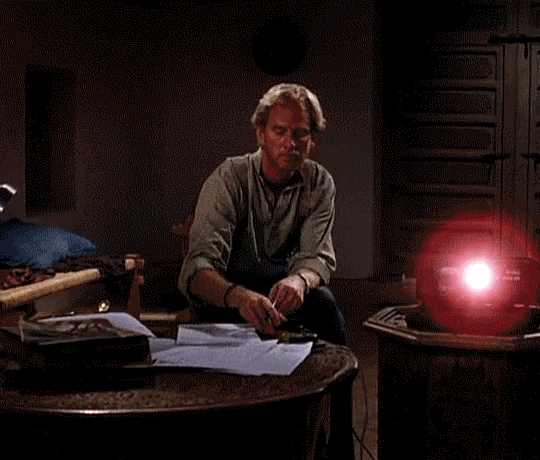
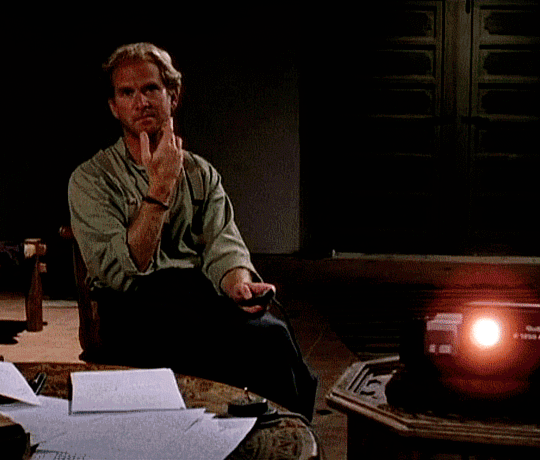
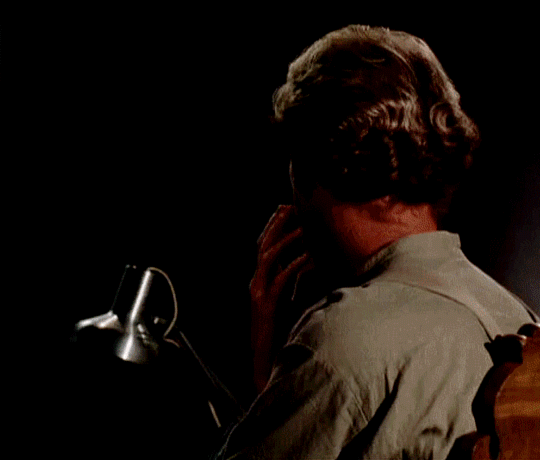
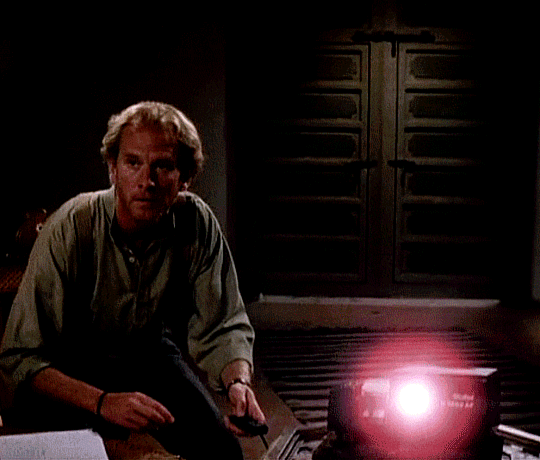
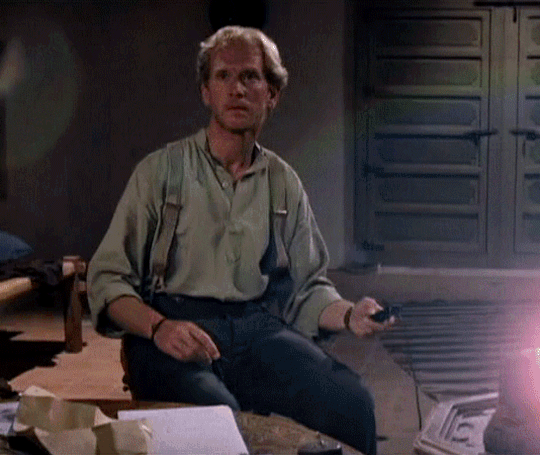
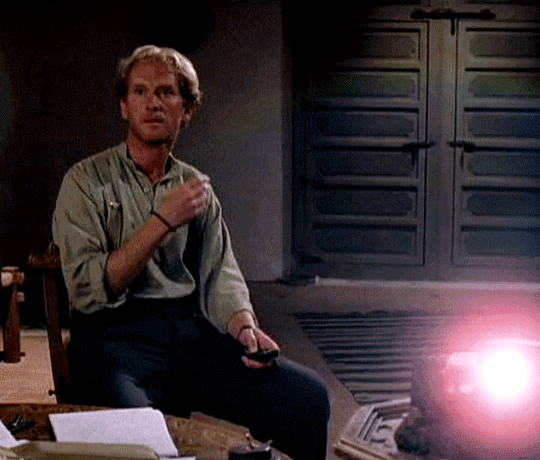
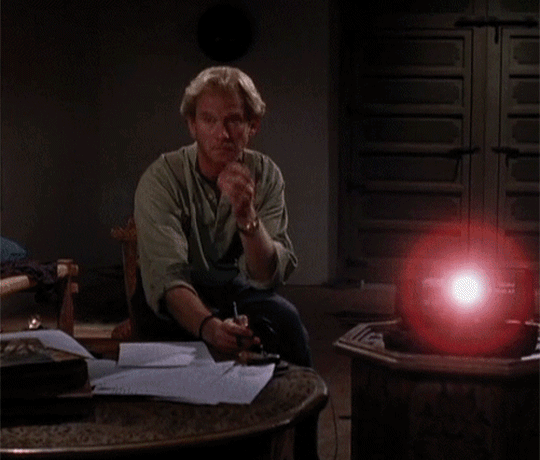
James Wilby as John Locke in Gradiva (C'est Gradiva qui vous appelle) 2006.
31 notes
·
View notes
Text
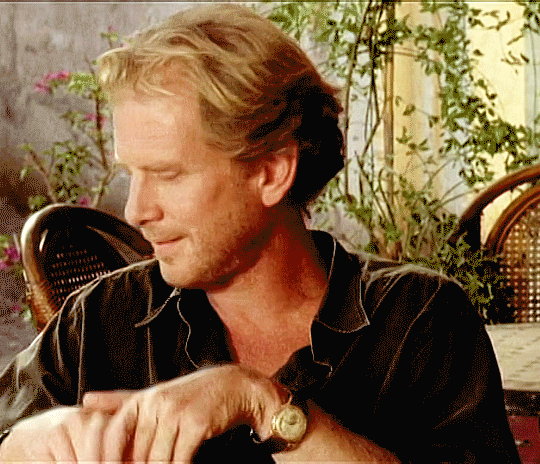

James Wilby as John Locke in Gradiva (C'est Gradiva qui vous appelle) 2006.
20 notes
·
View notes